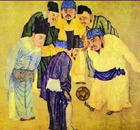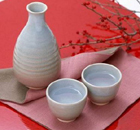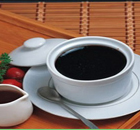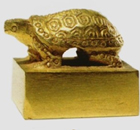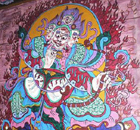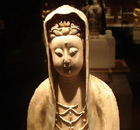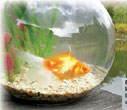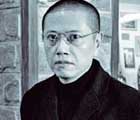Delicacies
Buried treasures
By Pauline D Loh (China Daily)
Updated: 2010-03-27 09:14
 |
Large Medium Small |

Duck is not often cooked, but when it is, it tends to be part of a festive meal. Pauline D Loh looks at a special duck recipe that is a gem of Chinese cuisine
My grandfather was a journalist in Shanghai at the turn of the century, and he often preferred the rich, sweet flavors of benbang cai (Shanghai cuisine) to the blander dishes of his native Cantonese.
I remember one of his favorite kitchen projects - a duck carefully deboned and stuffed with a cornucopia of delicious delights. He called it babao ya, or Eight Treasures Duck.
Grandpa's culinary efforts would turn the kitchen upside down for an entire day, but the end result was an awe-inspiring bird that sat in the center of the dining table, steaming gently in its crisp skin. The highlight of the meal was when he made the first incision and the stuffing would spill out like colorful jewels. It was a feast for the eyes, the nose and the palate.
My grandfather did not pass the recipe to me, and in my later years I went to great lengths to re-capture the taste of his Eight Treasures Duck.
There are many versions of the recipes collected in my encyclopedic collection of cookbooks, but it took years of experimenting before I could get it right.
First, there were the ingredients. This duck was traditionally stuffed with the sweet glutinous rice, the Shanghainese called babao fan, a sticky mess of sweet dates, chestnuts, lotus nuts and red bean paste.
My grandfather preferred a savory version, and he also preferred using normal rice, going to great lengths to seek out the best rice from Northeast China for his stuffing.
Then, the whole duck had to be steamed, and then deep-fried to get the tenderness that characterized the dish.
We were one of the first to have a massive gas oven put into the kitchen, and my grandpa decided it was a healthier way to cook.
Despite all these innovations, grandpa's Eight Treasures Duck became a celebrity dish, and the many chefs among his foodie friends started using his version on their menus.
Even to this day, when my family dines out, we still see this dish featured occasionally in some of the Chinese restaurants we patronize, and it brings back memories of my grandfather and his culinary adventures.
Recent research tells me that the Eight Treasures Duck was originally a palace kitchen specialty, popularized by the Qing emperor Qian Long (1711-1799). Perhaps he ate this during his sojourns south to Jiangsu and brought it back to Beijing, because there was no record of this in the imperial kitchen manuals before then.
This is a dish that takes some time to prepare, but it is a spectacular dish for entertaining and although it is a bit time consuming, it is actually quite simple to do. Besides, if you master this, you will have in your kitchen repertoire one of the great dishes of Chinese cuisine.
This is my version, updated and simplified, but losing none of its original flavors.
